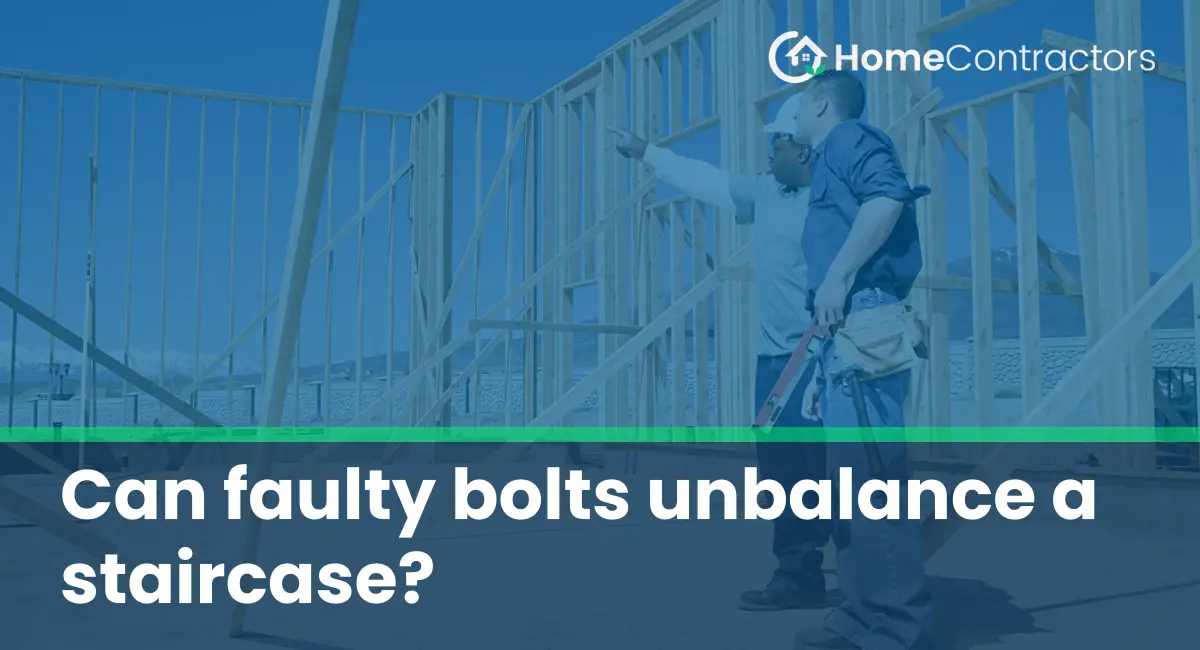Staircases are common fixtures in buildings and homes, providing a means of access between different levels. The safety and stability of a staircase are of utmost importance to ensure the well-being of people using it. Bolts play a crucial role in securing the structural integrity of a staircase, and any faults or problems with these bolts can potentially unbalance the staircase, posing safety hazards. In this article, we will explore the effects of faulty bolts on a staircase and how they can lead to an imbalance.
The Role of Bolts in Staircase Stability
Before delving into the impact of faulty bolts on a staircase, it is essential to understand the significance of bolts in ensuring stability. Bolts are used to secure the various components of a staircase together, such as the treads, risers, handrails, and balusters. These components rely on the strength and integrity of the bolts to distribute the weight and resist the forces exerted during usage.
Potential Consequences of Faulty Bolts
1. Uneven Stress Distribution
Faulty bolts may not provide sufficient clamping force, leading to an uneven distribution of stress on the staircase components. Uneven stress distribution can cause certain parts of the staircase to bear a disproportionately higher load, increasing the risk of structural failure or collapse. This imbalance results in an unstable staircase that can be hazardous to users.
2. Loosened Connections
Faulty bolts can also result in loosened connections between staircase components. Over time, the constant movement and vibration when using the stairs can gradually reduce the clamping force of the bolts, leading to loose connections. Loose connections create an unstable platform for people using the staircase, increasing the likelihood of accidents, falls, and injuries.
3. Structural Shifts
In addition to uneven stress distribution and loosened connections, faulty bolts can cause structural shifts in a staircase. When bolts fail or become loose, the staircase components may shift slightly, altering their alignment. Even minor misalignments can disrupt the balance and stability of the staircase, causing it to tilt or wobble. Such movements make it difficult to navigate the stairs safely and increase the risk of accidents.
4. Gradual Damage Accumulation
While the immediate consequences of faulty bolts may not be immediately apparent, over time, the impact can accumulate and worsen. The constant stress placed on compromised bolts can lead to gradual damage, including corrosion, fatigue, or deformation of the bolted connections. If not detected and addressed promptly, this damage can compromise the structural integrity of the entire staircase, putting users at significant risk.
Detecting and Addressing Faulty Bolts
Regular inspection and maintenance are crucial for identifying and addressing faulty bolts in a staircase. Some important steps to take include:
1. Visual Inspection
Periodically inspect the staircase components and examine the bolted connections for signs of damage or looseness. Look for any noticeable shifts or misalignments, rust or corrosion, and any visible signs of wear and tear on the bolts.
2. Tightening and Replacement
If loose bolts are identified, tighten them immediately using the appropriate tools and techniques. However, it is important to follow the manufacturer’s specifications to avoid overtightening, which can cause damage. If any bolts show signs of significant damage or cannot be tightened effectively, they should be promptly replaced with new, high-quality bolts.
3. Professional Inspection
Engage a professional staircase or structural engineer to perform a thorough inspection if there are any concerns or suspicions about faulty bolts. These experts have the knowledge and experience to identify hidden issues, conduct load tests, and recommend appropriate repairs or replacements to ensure staircase safety.
Faulty bolts can indeed unbalance a staircase, posing significant safety risks to users. Without proper clamping force, loose connections, and structural shifts can compromise the stability of the entire structure. Regular inspection, prompt tightening or replacement of faulty bolts, and engagement of professional experts are vital steps to ensure the safety and longevity of a staircase. By addressing these concerns proactively, we can make our staircases safer and more reliable for everyone.
